Have you ever walked into a room and immediately felt that something was off—not with the décor or the lighting, but with the sound?
Chances are, you’ve experienced the unsettling effects of poor acoustics.
It’s like visual clutter, but for your ears, disrupting everything from casual conversations to high-stakes recording sessions.
If you’re looking to escape this auditory chaos, you’ve landed on the right guide.
This comprehensive resource is designed to navigate you through the intricacies of sound diffuser placement.
Whether you’re setting up a home theater, a professional recording studio, or simply want to improve the acoustics in your living space, proper placement of sound diffusers can make all the difference.
So, why is the placement of sound diffusers so crucial? Let’s dive in and unravel the science and strategy that will guide you to acoustic perfection.
Why Is Proper Placement of Sound Diffusers Important?
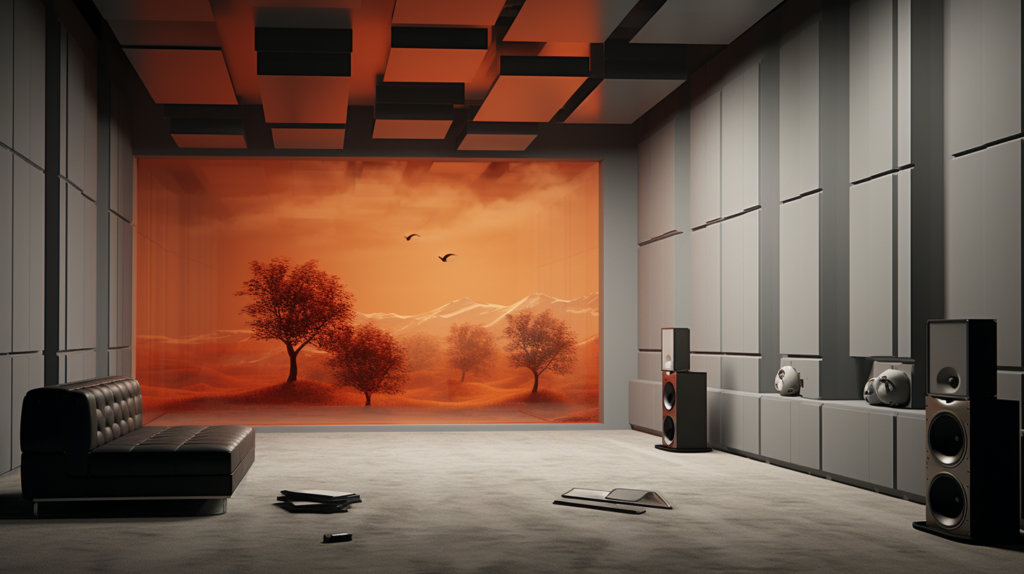
Understanding the importance of sound diffuser placement is the first step in achieving a well-balanced acoustic environment.
It’s not merely about scattering these devices around the room. Strategic placement is essential for maximizing their effectiveness and enhancing your auditory experience.
The implications of improper placement are numerous.
You could experience uneven sound quality, with some areas experiencing heightened echoes and others suffering from muffled sounds.
These acoustic imbalances can be distracting and can significantly affect the quality of conversations, recordings, or any activity that relies on clear sound.
What Scientific Principles Govern Sound Diffuser Placement?

Sound diffusion is a principle rooted deeply in the field of acoustics. This scientific discipline explores how sound behaves in different environments.
Diffusion operates on the basis that sound waves can be scattered in various directions to avoid the problems of sound focusing and echoing.
This scattering effect is especially crucial in environments where sound quality is paramount. Think recording studios, concert halls, or even home theaters.
By distributing sound waves more evenly across a room, diffusion eliminates the peaks and troughs that characterize poor acoustics.
Essentially, it helps to create a more uniform sound field.
In an enclosed space, sound waves bounce off walls, ceilings, and floors.
These reflected waves can interfere with direct sound waves, leading to phase issues and other acoustic complications.
Sound diffusers mitigate this problem by scattering the reflected waves, reducing their impact and helping to create a more neutral sound field.
How Do Room Acoustics Affect Sound Diffuser Placement?
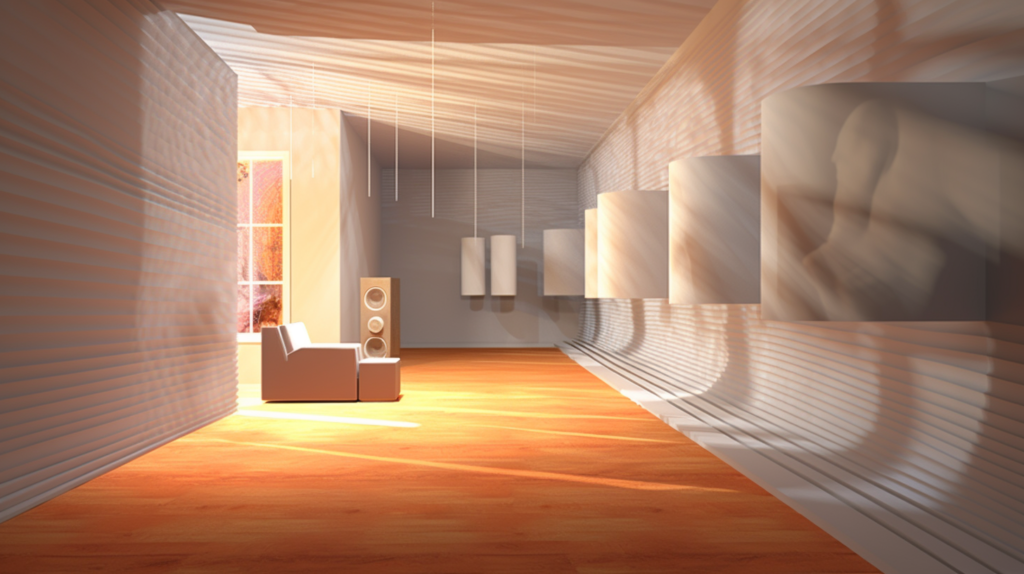
The characteristics of a room play a significant role in how sound behaves within it.
Factors such as room size, shape, and the materials used in its construction can all affect sound behavior.
For example, sound waves will behave differently in a room with hard, reflective surfaces compared to one with soft, absorbent materials.
Hard surfaces such as concrete or glass can cause sound waves to bounce around uncontrollably.
This behavior can lead to a harsh sound environment characterized by echoes and sound focusing.
In such spaces, the placement of sound diffusers becomes critical to break up these reflected waves and create a more balanced acoustic environment.
On the other hand, rooms with softer materials like heavy curtains or upholstered furniture can absorb sound waves.
While this absorption can reduce issues like echoing, it can also lead to a space that sounds too “dead” or “muffled.”
In these types of rooms, sound diffusers can add some liveliness back into the environment by scattering residual sound waves.
What Are the Best Areas in a Room to Place Sound Diffusers?
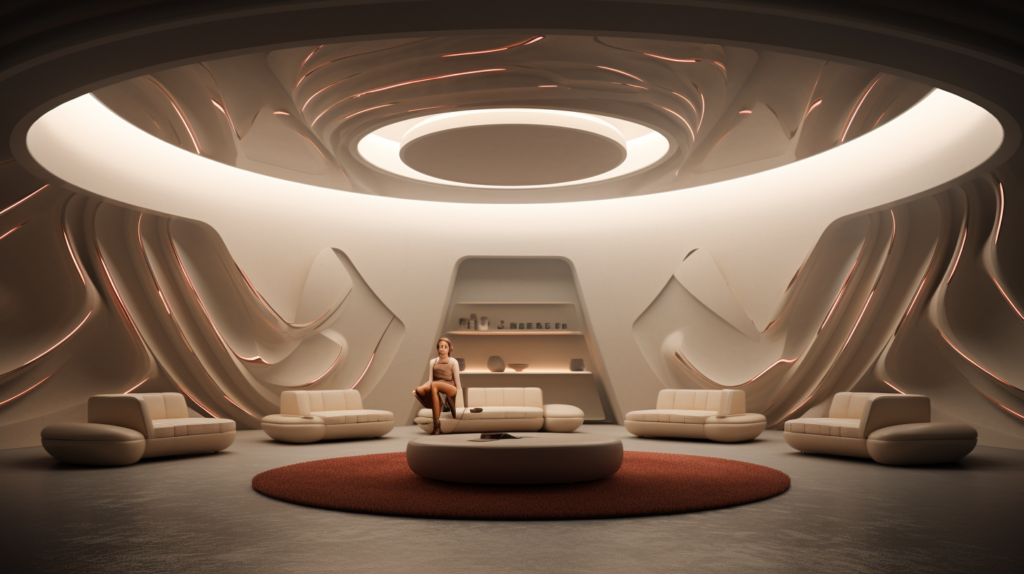
Identifying the optimal locations for sound diffusers in a room is akin to solving an intricate puzzle.
The effectiveness of a sound diffuser is highly dependent on its position within the room. Hence, it’s crucial to identify those spots where the diffuser will have the most impact.
A common strategy is to place sound diffusers on the rear wall behind the primary listening position.
This placement helps to create a more immersive and spacious sound field, adding depth to the listening experience.
The diffusers work to scatter the sound waves coming from the speakers, reducing the chance of any focused sound or “hot spots.”
Ceiling placement is another strategy that can be highly effective, albeit often overlooked.
Since sound waves also travel vertically, the ceiling plays a crucial role in how sound is distributed within a space.
Installing diffusers on the ceiling can help scatter these upward-traveling sound waves, creating a more uniform sound field.
Additionally, the corners of a room are often problematic areas where sound waves tend to accumulate, creating bass build-up or other acoustic anomalies.
Installing diffusers in these areas can help to scatter these concentrated sound waves, making for a more balanced sound environment.
How Does Placement Differ Between Sound Diffusers and Acoustic Panels, Including Polyester Acoustic Panels?
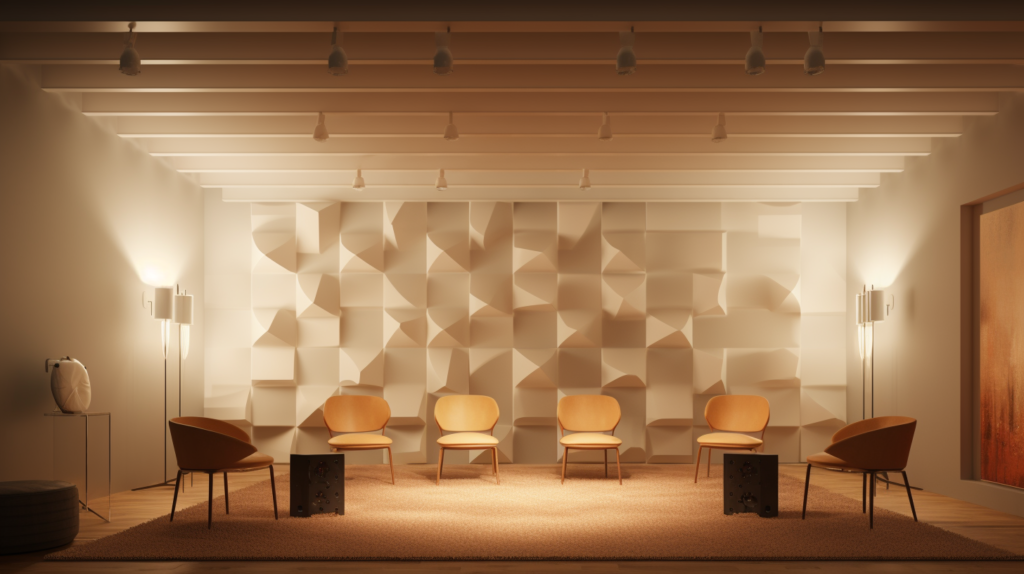
Acoustic treatment often involves a combination of different elements, each serving a unique purpose.
Sound diffusers are excellent for scattering sound and creating a balanced sound environment.
In contrast, acoustic panels, such as those made from polyester, are designed to absorb sound, reducing echoes and ambient noise.
The strategies for placing these two types of acoustic solutions can vary widely.
Acoustic panels are often installed at ear level on the walls, where they can effectively absorb sound waves that would otherwise bounce back into the room.
They are also commonly placed on the front wall behind speakers to capture and absorb any backward-projecting sound waves.
Sound diffusers, on the other hand, are often placed on the rear wall or ceiling to tackle sound reflections effectively.
They serve to maintain the energy of a room by scattering sound waves rather than absorbing them.
This characteristic makes them ideal for spaces where you want to preserve a sense of “liveliness” or “ambiance.”
For those interested in delving deeper into the distinctions between these two, we have a detailed guide that discusses the placement of both sound diffusers and acoustic panels, including polyester acoustic panels.
You can read it here for a complete understanding.
Should Sound Diffusers Be Placed on Walls or Ceilings?
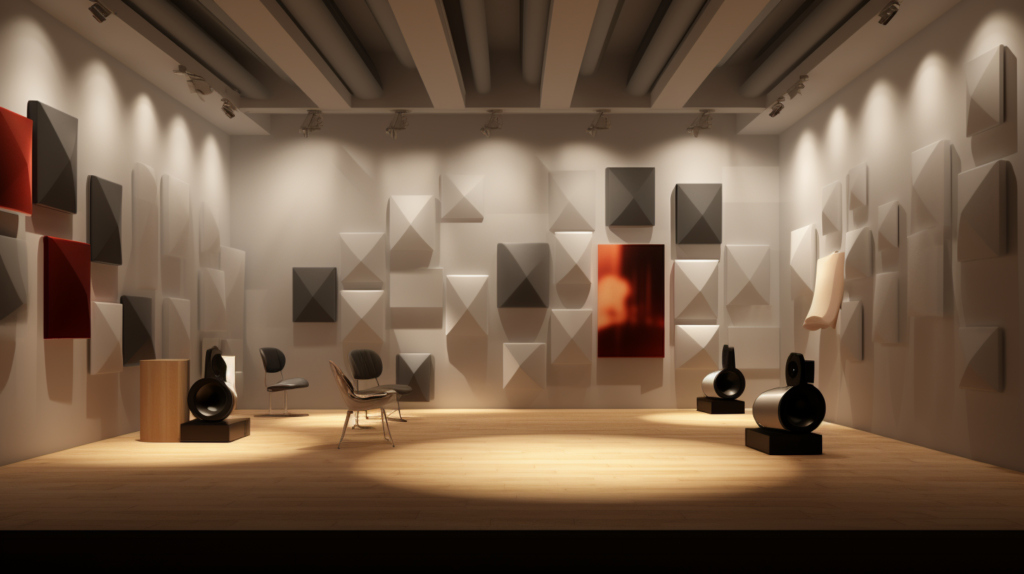
The decision to place sound diffusers on walls or ceilings can be a complex one, influenced by various factors.
These factors can include the room’s dimensions, its acoustic properties, and the specific sound challenges you’re facing.
Each placement option comes with its own set of advantages and drawbacks.
Wall placement is generally more straightforward and easier to implement. It’s the go-to option for those who want a simple yet effective solution for improving room acoustics.
Diffusers placed on walls work primarily to scatter horizontally-traveling sound waves, helping to create a more balanced left-right sound field.
Ceiling placement, while more complex, offers the advantage of affecting both the horizontal and vertical dimensions of the sound field.
In rooms with high or vaulted ceilings, this approach can be especially beneficial.
By scattering sound waves in multiple directions, ceiling-placed diffusers can create a more immersive and multidimensional sound experience.
What Software Tools Can Help with Sound Diffuser Placement?

In today’s age of technology, a variety of software tools are available to assist you in perfecting the placement of your sound diffusers.
These software programs can simulate a room’s acoustic characteristics, providing valuable insights into how different placement scenarios could affect sound behavior.
Some of these software tools utilize complex algorithms based on acoustic theories and principles.
They can predict how sound waves will travel and interact within a room, providing visual indicators that guide your placement decisions.
This level of precision is akin to having a professional acoustic consultant at your fingertips.
The use of software tools can significantly streamline the trial-and-error process that often accompanies sound diffuser placement.
It saves you both time and the physical effort involved in repeatedly moving diffusers around to find the most effective position.
For those serious about achieving the best acoustic environment, these tools can be invaluable.
How Much Does Proper Sound Diffuser Placement Cost?

Cost is an essential factor to consider when planning your sound diffuser placement.
While it’s tempting to opt for cheaper alternatives, it’s crucial to remember that quality often comes at a price.
And in the realm of acoustics, skimping on quality can lead to less-than-ideal results.
High-quality sound diffusers made from effective materials may come with a higher price tag.
However, their superior performance can significantly enhance your room’s acoustics, making the investment worthwhile.
It’s also worth noting that well-crafted diffusers are likely to have a longer lifespan, providing better value for your money in the long run.
Budgeting should be more than just a consideration of upfront costs. It should also take into account the longevity and effectiveness of your chosen diffusers.
Therefore, it’s often wise to invest in quality products and spend the time to place them correctly.
This approach ensures that you achieve the desired acoustic improvements without needing frequent adjustments or replacements.
Are There Real-World Examples That Demonstrate Effective Sound Diffuser Placement?
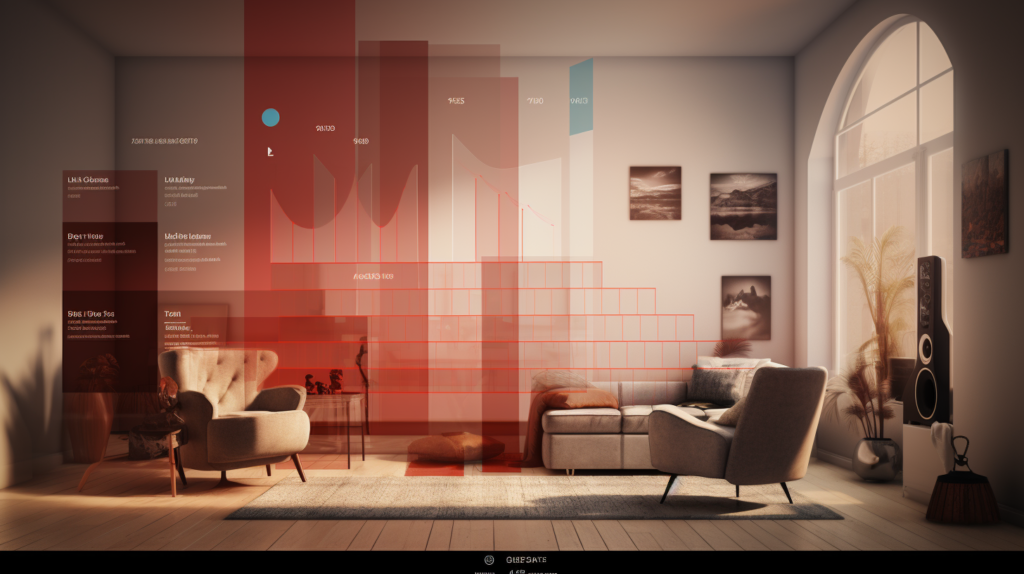
Real-world examples serve as excellent references for understanding the effectiveness of sound diffuser placement.
These case studies often include detailed before-and-after acoustic measurements, providing valuable insights into how correct placement can dramatically improve a room’s sound quality.
For example, a recording studio that once suffered from poor acoustics might undergo a transformation through the strategic placement of sound diffusers.
The result is a more balanced sound field, leading to clearer recordings and a better listening experience.
Such examples provide not just validation for the theories discussed but also actionable insights that can guide your own placement strategy.
These case studies often feature various types of spaces, from professional setups like recording studios to personal spaces like home theaters.
Examining these examples can provide a well-rounded understanding of how sound diffuser placement can be optimized for different applications and environments.
Conclusion
Understanding and applying the principles of sound diffuser placement can transform your acoustic environment.
Whether it’s a home theater or a professional studio, strategic placement is key to a balanced sound.
From the science of acoustics to practical room considerations, this guide has aimed to provide a comprehensive roadmap for your acoustic needs.
Investing in quality diffusers and placing them correctly can offer lasting benefits for any space.
Thank you for joining us on this journey toward improved acoustics, and we hope you’re now equipped to enhance your auditory experience.
